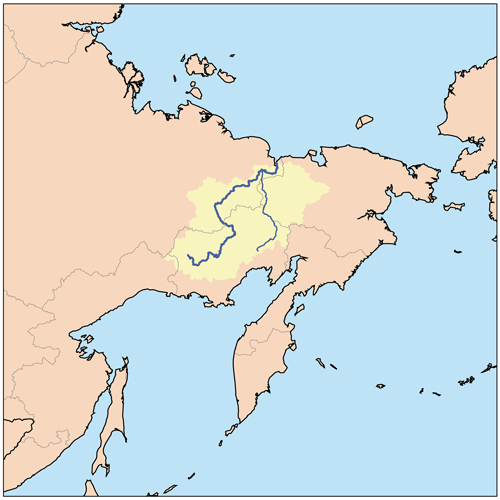Although it was little known in the western world there were great gold rushes in Russia Russia Russia
 |
| This is a map of the Kolyma Basin in the Far East of Russia |
Most of the knowledge about mining in Russia Russia Western Europe that was a very important factor in the discovery of gold.
 |
| Gravel Banks along a river in Russia |
The first deposit of precious metals was discovered on the eastern side of Lake Baikal Russia
By the year 1737 gold was discovered in several places in the Russian Empire, one of these places was on the north shore of the White Sea . It was in 1745 the gold was discovered on the eastern flank of the Ural Mountains in Siberia . It took two years to verify that gold was actually discovered before they were able to open the first Russian gold mine. At the time gold was still a state monopoly, and the majority of the Russian population was still being held in serfdom by the nobles which greatly curtailed exploration efforts.
 |
| Map of Russia |
It wasn't until 1803 before the first gold deposit was found on the western slope of the Ural Mountains to finally convince the Russian government they should unchain the serfs for prospecting for gold that was then open to anyone with royalties payable to the State Bank.
This unchained the Russian population and it wasn't too long before Russia Russia Russia Russia
It was during this period of exploration for gold that a young girl discovered a gold nugget in the basin of the Nerva River
It was right after the Russian Revolution in 1917 with a Russian geologist named Yuri Bilibin discovered the vast gold deposits in the Far East section of Russia Kolyma Basin that eventually became the infamous Gulag's of the mid-20th century. This is the place where many political and war prisoners were worked to death mining gold.
Bilibin was also one of the founders of the Theory of Metalogeny and Global Tectonics that codified the modern method of finding gold and other minerals in specific geological settings. Today most gold was discovered in the so-called suture zones where one tectonic plate has collided with another forming a mountain range.

Bullion Exchanges is a well known Precious Metals Seller established in New York City's Diamond District.
ReplyDeleteThey have a massive inventory of products including but not limited to, precious metals that range from the popular gold & silver to platinum & palladium.
They are offering a wide selection of products appealing to first time buyers and for experienced collectors.